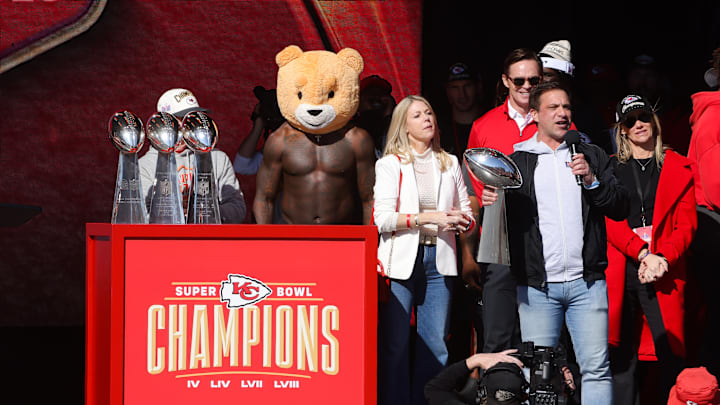Look, no one is complaining too much for a team that's won as much as the Chiefs.
A dynasty in its prime. A chance at a three-peat. Eight straight division titles. No one around Kansas City should make too much of anything negative regarding the Chiefs these days.
Even here, if you read something questioning a move or raising a concern, just know that it's always understood around here that Chiefs-sized problems are not the same as, say, those of the Broncos or Raiders.
But that doesn't mean that everything is perfect for the Kansas City Chiefs these days. Not everything comes up roses and all you need to do is look back at the drama of last season's team to realize just how tough the sledding can get even for the best of franchises. Offenses still sputter. Rosters still have holes. Coaches still make odd calls.
For our purposes this time around, we're interested in looking at recent NFL Draft history and specifically some picks that continue to haunt the Chiefs—within reason, of course. Which picks would Brett Veach love to take back? Which moves still have us wondering about alternate outcomes?
We guess these ghosts would be more of the friendly Casper type than any sort of truly frightening apparition. Still, a ghost is a ghost and we begin with the most obvious one of all.
Clyde Edwards-Helaire (2020)
The scenario: At the time of this selection, Brett Veach was treating first-round picks like unwanted relics from a past relationship. He couldn't get rid of them fast enough in deals for Frank Clark or Orlando Brown Jr., but in 2020, he actually decided to pause and use the selection as intended—on a position not usually intended.
To his credit, the Chiefs offense at this point looked like the famous boulder running over everything from Indiana Jones and the Temple of Doom, and it had to drive Veach crazy thinking about adding a cornerstone for the backfield to round it all out.
Tyreek Hill and Travis Kelce were already carving out Hall of Fame careers and Sammy Watkins was a vital cog when healthy, but the loss of Kareem Hunt really took some air out of the overwhelming nature of this offense. It felt right to replace Hunt with the best running back in the draft (or the first one taken).
The issue: The pick had its detractors from the start since the Chiefs chose to use the only first-round pick in years on a luxury—perhaps the single easiest position to fill in football. Instead of investing in the trenches on either side, securing a big-time pass catcher for the future, or even landing a playmaker in the secondary, the Chiefs went with a running back.
Even worse, Edwards-Helaire would never live up to the billing as the first back picked in his class. He was noted for being a well-rounded back out of LSU with stellar hands, but the Chiefs never went all-in on CEH as a primary pass catcher and he was quickly passed over on the depth chart by others—including a seventh-rounder named Isiah Pacheco.
Even if the Chiefs had gone with another back, the conversation might feel different. DeAndre Swift and Jonathan Taylor were the next two backs off of the board and they've both been far more productive, especially Taylor who might be the best back in the game. Even A.J. Dillon and Antoni Gibson taken rounds later have produced more at the pro level. That's not good.
